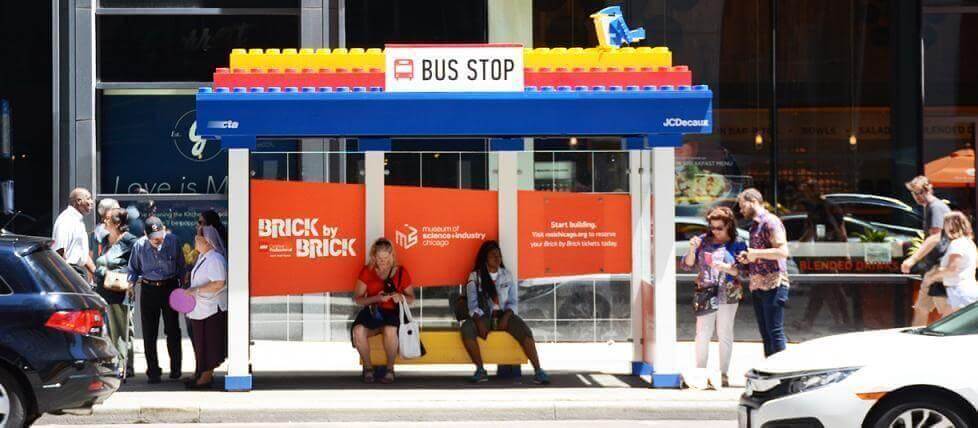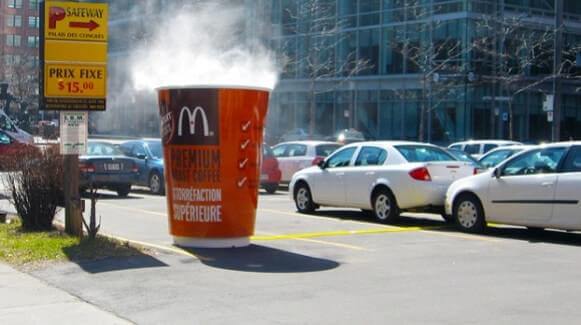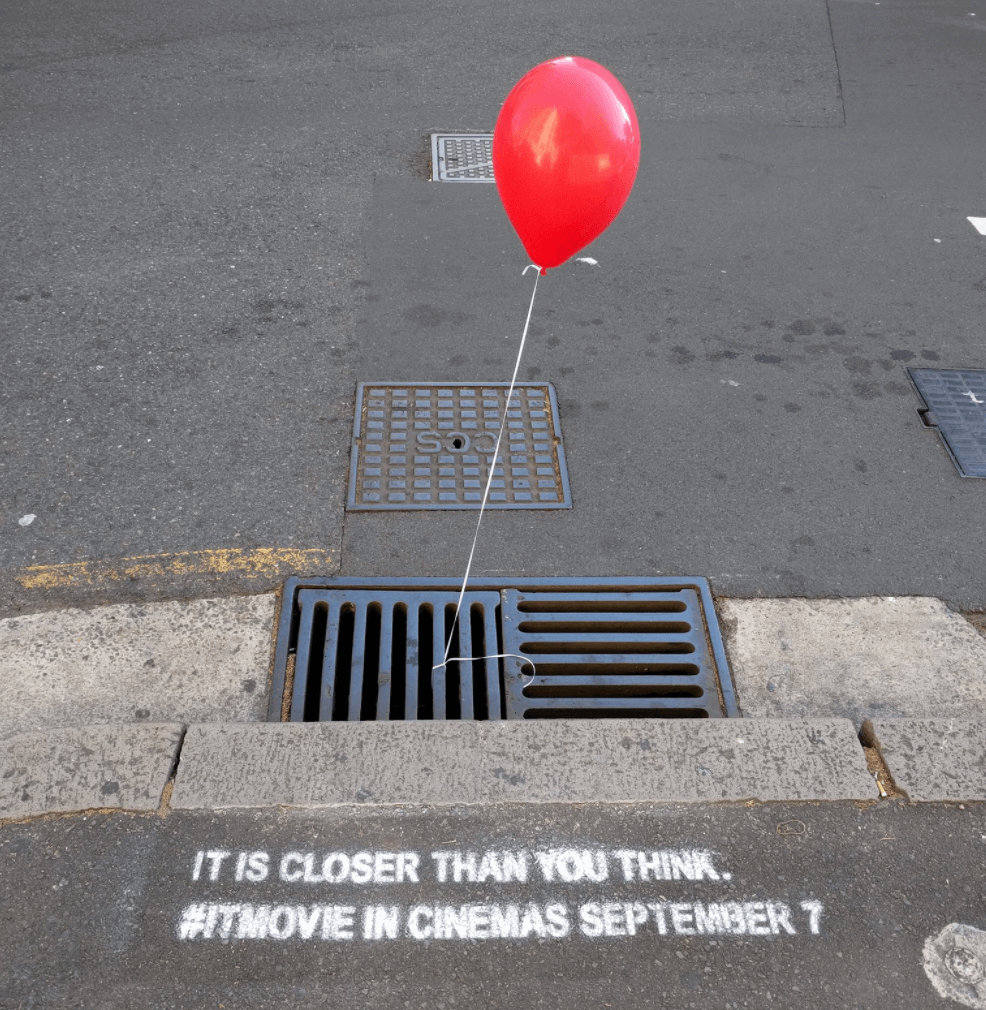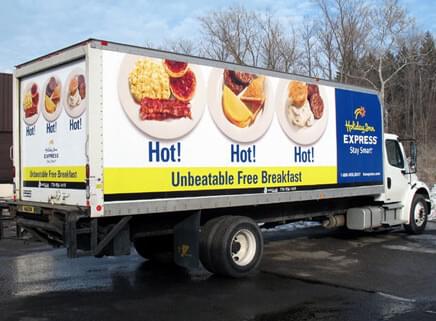
Transit advertising is a definitive way to get outdoor advertising across to commuters and pedestrians alike. It’s a form of alternative advertising that speaks to a variety of consumers, highlighting different products, companies, or events. It can be directional, as the route it travels on can lead the commuter to the exact location of the business. Or it can be promotional, as the vehicle wrap and design can cast light on an upcoming Blockbuster film or concert featured in the city. Whatever it may be, transit advertising provides quality outdoor signage to an urban audience.
Also referred to as “advertising on transport”, transit advertising are ads placed on or in any mode of transport – from buses to taxis, trains, trams, and subways. It also includes advertisements placed in transport waiting areas or loading stations such as bus stops, subway entries, fuel stations, and others.
Transit advertising can show face in the form of graphics, simple text or other visual information. In fact, some businesses also prefer to make use of LCD screens or plasma placed strategically inside buses or trains to have a digitally brilliant affect on commuters. This post will take a look at some drawbacks of transit advertising, and offer valid alternatives to advertise in an OOH setting.
While it’s a popular advertising strategy, transit advertising does have its cons. Here are a few:
- It’s Pricey – The captive audience is worth a lot, and the transit agencies know it. It costs a lot to run a public transit service, so their services rely partially on advertising costs. Usually, the prices will be hiked up compared to other out-of-home alternatives due to the transit funding costs as an added factor.
- It’s Saturated – Many advertising firms want access to the same audience, therefore an advertisement on a bus may be shafted for another ad inside the bus that holds more truth and substance. On a side note, an ad that is clever enough to commuters will stick out among the rest, so aim for this personal touch.
- Distractions – Mobile phones, newspapers, podcast listening, and other reading materials are all distractions that people use to pass the time on transit, dismissing any advertisement in sight. This ability to distract yourself while using transit limits the retention that consumers could have when coming face-to-face with valuable advertising.
After learning of a few cons that stem from transit advertising, let’s offer up some alternatives to this:
1. Billboards/Mobile Billboards:
Arguably, the best alternative to transit advertising. From mobile billboards to static billboards on the side surfaces of buildings, this out-of-home ad channel is hot and rising in numbers. It’s said that you see over 1000 ads per day, and yet remember only seven. With digital advertising, that first number is probably higher. But if you drive a car or do a lot of city stepping daily, a large portion of the ads you see will be billboard ads. Billboards can take the form of LED display screens, illuminating images onto the faces of pedestrians, furthering consumer interest. They can also be steel constructed giants, hovering over busy city highways, prompting people to learn more. Whatever the format or style, billboards are the #1 best alternative to transit advertising.
Mobile billboards are a great alternative as they roll the same way as transit ads, just with more control and usually a lot faster, covering a range of areas outside of a fixed transit route. This form of billboard may contain audio/visual components that further enhance the advertising messages, creating more of an attraction with potential consumers.
2. Street Furniture Ads:
Street furniture advertising provides the ideal opportunity to drive your brand into the minds of all commuters, pedestrians and motorists. Located throughout city centres, suburbs and rural areas, street furniture advertising delivers point-of-sale and top of mind awareness. An added bonus is the positive contribution this medium provides to the community. It could act as an art piece, absorbed neatly in the outside environment. The credibility and attention of street furniture ads becomes high as they’re interesting to look at and, often times, interactive.
This easily accessible and affordable out-of-home media execution includes bus shelter ads, street pole advertising, and outdoor takeover/installation. Street furniture advertising is an ideal medium for mass market campaigns. It can also be used as directional outdoor advertising.
3. Guerrilla Marketing:
This is low-cost out-of-the-box marketing that elicits a surprise reaction in people in an outdoor setting. Here are some examples of where guerrilla marketing takes place to work advertising wonders.
-
Outdoor Guerrilla Marketing- Adds interest, or shock, to preexisting urban environments, like placing something removable onto a statue, or putting temporary artwork on sidewalks and streets. This brings out the curiosity in people happening to pass by.
-
Indoor Guerrilla Marketing- Similar to outdoor guerrilla marketing, only it takes place in indoor locations like train stations, shops, and university campus buildings. This has the same effect of curiosity, just within closed doors.
-
Event Ambush Guerrilla Marketing- This leverages the audience of an in-progress event, like a concert or a sports game, to promote a product or service in a noticeable way, usually without permission from the event sponsors.
-
Experiential Guerrilla Marketing- Features elements from everything stated above, but executed in a way that requires the public to interact with the brand. This makes a public audience participants in the overall marketing strategy.
4. Truckside Advertising:
This alternative to transit advertising meets its mobility; it just takes form on the sides of trucks that act as mobile billboards for outdoor consumers to make a decision about. Truckside advertising is mounted onto trucks that are typically already delivering goods and services to a given area, and a main benefit is that there is complete control over the ad campaign when choosing this alternative. Its low cost, attention-grabbing personality, and broad reach add to its OOH effectiveness. Truckside advertising also offers businesses the lowest cost-per-impressions, and adds complete value to an existing marketing mix.
Aside from some of the best alternatives to transit advertising, other options such as walking billboards, projection media, ATM advertising, and gas station media work to deliver poignant ad messages as well.
After looking at a few cons of transit advertising and highlighting great alternatives for businesses and brands to use as part of their marketing mix, it’s clear that there are plenty of OOH ways to make your service known.






